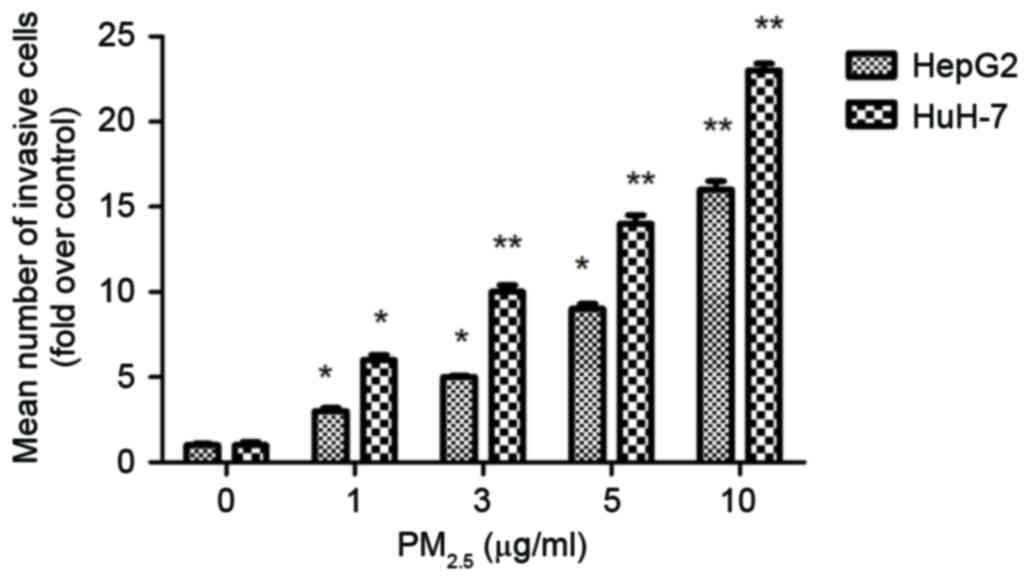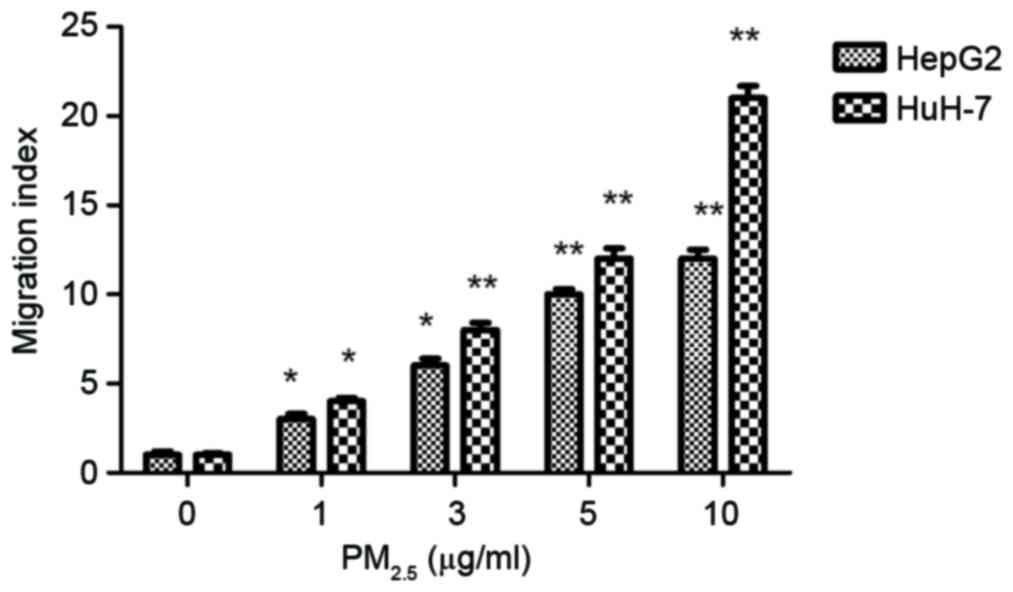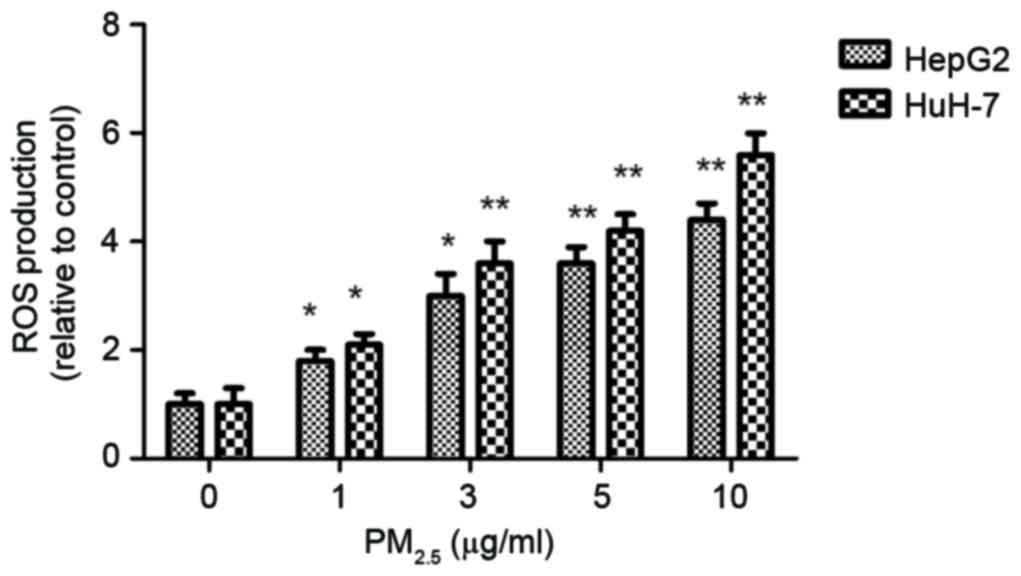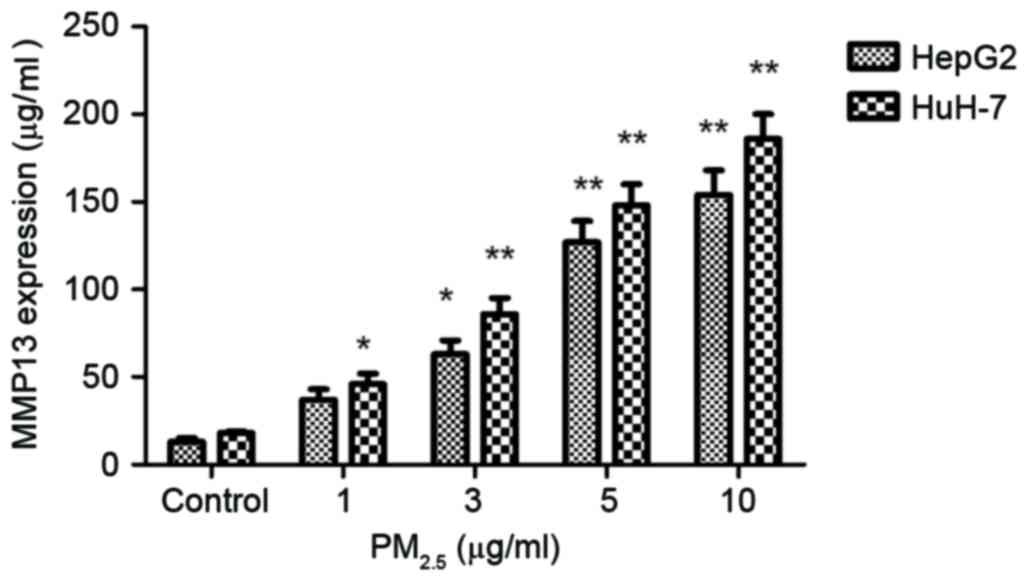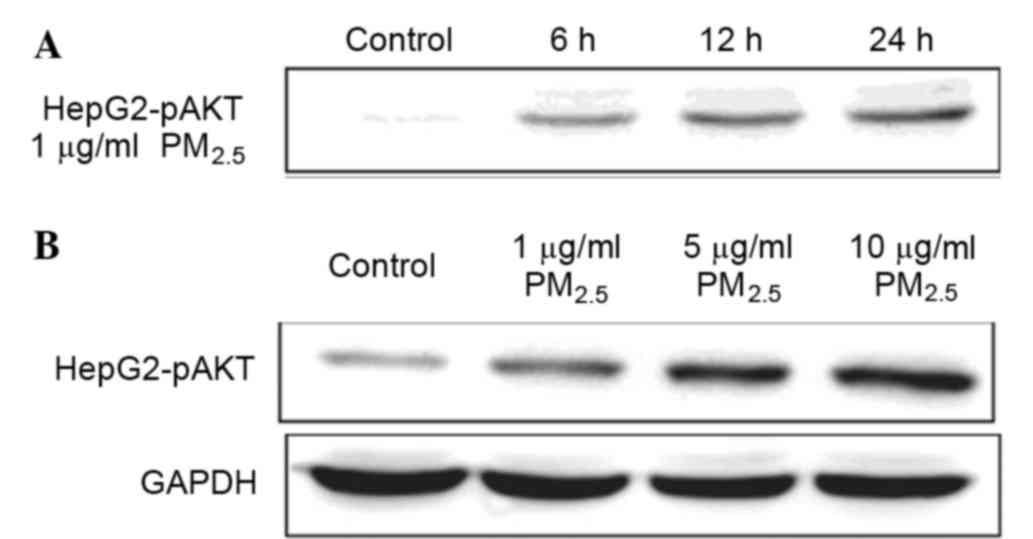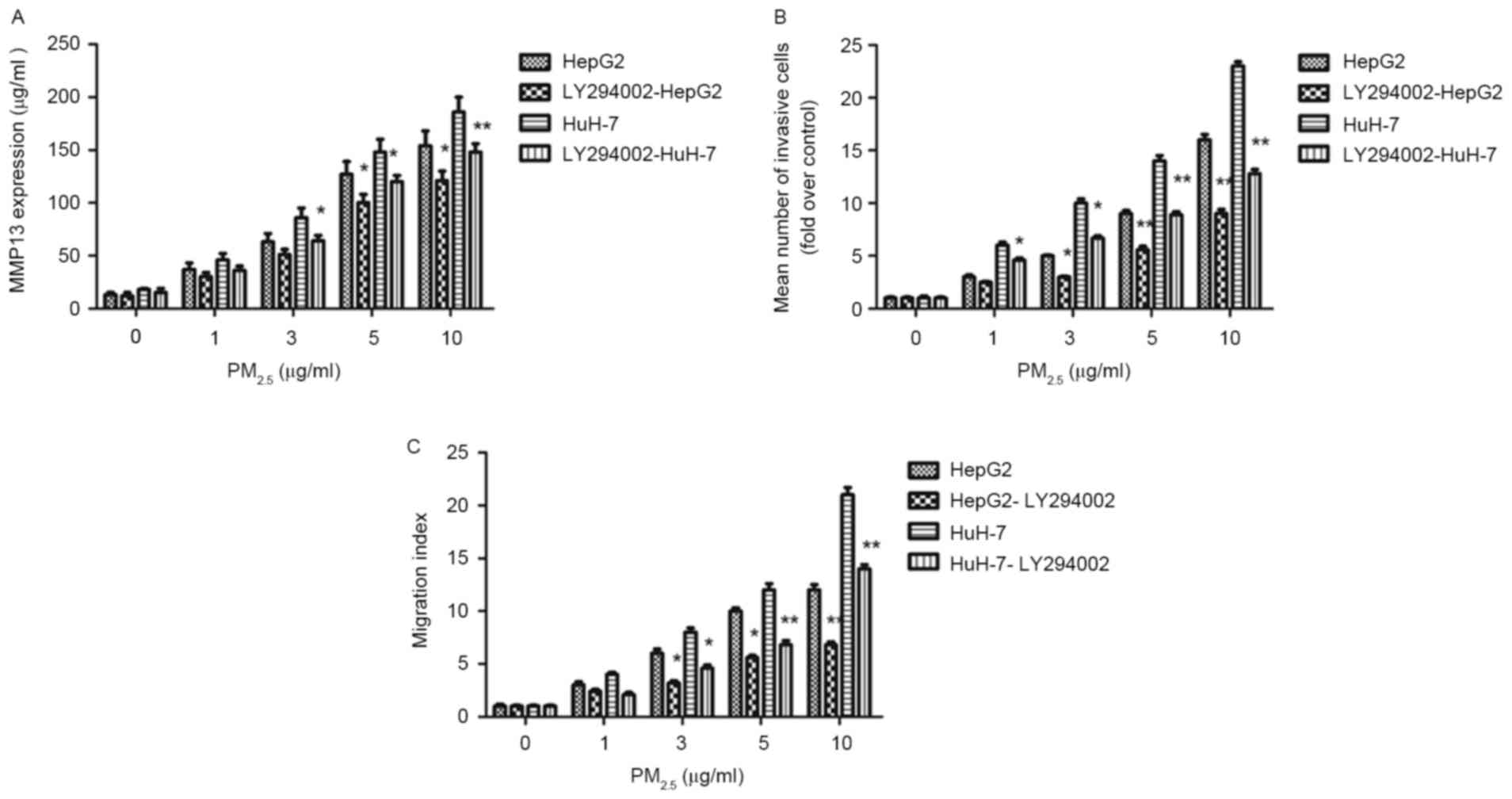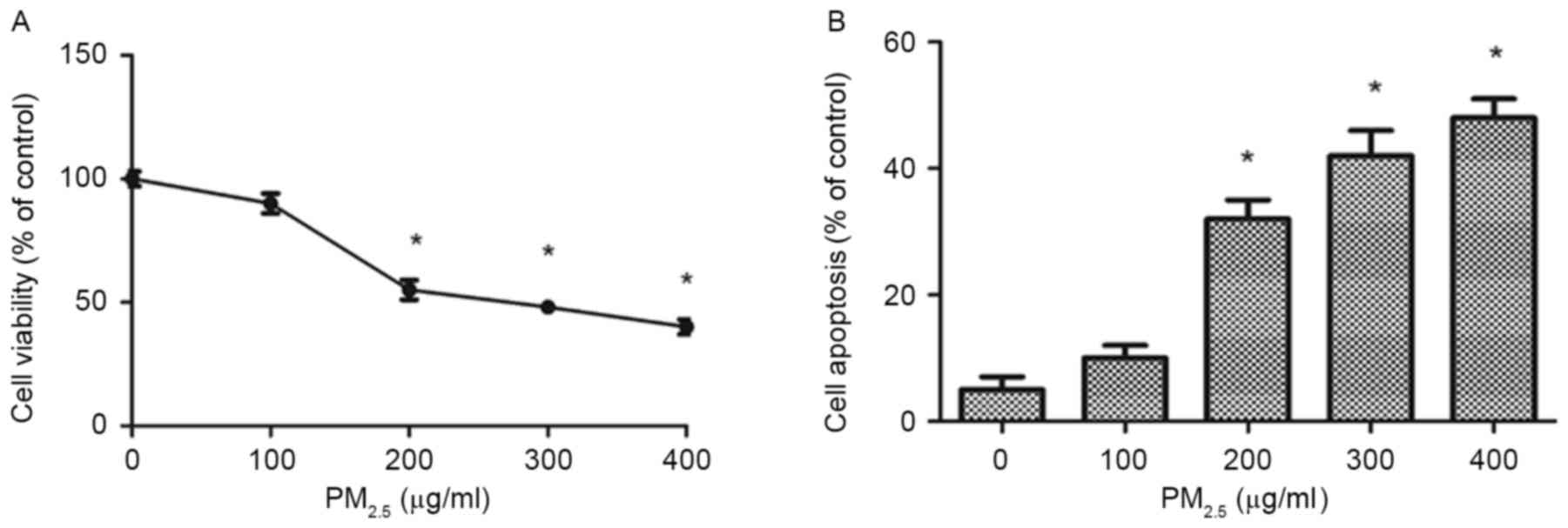|
1
|
Hou X, Strickland MJ and Liao KJ:
Contributions of regional air pollutant emissions to ozone and fine
particulate matter-related mortalities in eastern U.S. urban areas.
Environ Res. 137:475–484. 2015. View Article : Google Scholar : PubMed/NCBI
|
|
2
|
Eze IC, Schaffner E, Fischer E, Schikowski
T, Adam M, Imboden M, Tsai M, Carballo D, von Eckardstein A, Künzli
N, et al: Long-term air pollution exposure and diabetes in a
population-based Swiss cohort. Environ Int. 70:95–105. 2014.
View Article : Google Scholar : PubMed/NCBI
|
|
3
|
Chow JC: Health effects of fine
particulate air pollution: Lines that connect. J Air Waste Manag
Assoc. 56:707–708. 2006. View Article : Google Scholar : PubMed/NCBI
|
|
4
|
Loomis D, Grosse Y, Lauby-Secretan B, El
Ghissassi F, Bouvard V, Benbrahim-Tallaa L, Guha N, Baan R, Mattock
H and Straif K: International Agency for Research on Cancer
Monograph Working Group IARC: The carcinogenicity of outdoor air
pollution. Lancet Oncol. 14:1262–1263. 2013. View Article : Google Scholar : PubMed/NCBI
|
|
5
|
Loomis D, Huang W and Chen G: The
International Agency for Research on Cancer (IARC) evaluation of
the carcinogenicity of outdoor air pollution: Focus on China. Chin
J Cancer. 33:189–196. 2014. View Article : Google Scholar : PubMed/NCBI
|
|
6
|
Boström CE, Gerde P, Hanberg A, Jernström
B, Johansson C, Kyrklund T, Rannug A, Törnqvist M, Victorin K and
Westerholm R: Cancer risk assessment, indicators, and guidelines
for polycyclic aromatic hydrocarbons in the ambient air. Environ
Health Perspect. 110:(Suppl 3). S451–S488. 2002. View Article : Google Scholar
|
|
7
|
Xia Z, Duan X, Tao S, Qiu W, Liu D, Wang
Y, Wei S, Wang B, Jiang Q, Lu B, et al: Pollution level, inhalation
exposure and lung cancer risk of ambient atmospheric polycyclic
aromatic hydrocarbons (PAHs) in Taiyuan, China. Environ Pollut.
173:150–156. 2013. View Article : Google Scholar : PubMed/NCBI
|
|
8
|
Tang D, Sun B, Yu H, Yang Z and Zhu L:
Tumor-suppressing effect of miR-4458 on human hepatocellular
carcinoma. Cell Physiol Biochem. 35:1797–1807. 2015. View Article : Google Scholar : PubMed/NCBI
|
|
9
|
Gores GJ: Decade in review-hepatocellular
carcinoma: HCC-subtypes, stratification and sorafenib. Nat Rev
Gastroenterol Hepatol. 11:645–647. 2014. View Article : Google Scholar : PubMed/NCBI
|
|
10
|
Zhang X, Ng HL, Lu A, Lin C, Zhou L, Lin
G, Zhang Y, Yang Z and Zhang H: Drug delivery system targeting
advanced hepatocellular carcinoma: Current and future.
Nanomedicine. 12:853–869. 2016. View Article : Google Scholar : PubMed/NCBI
|
|
11
|
Shu Y, Zhu L, Yuan F, Kong X, Huang T and
Cai YD: Analysis of the relationship between PM2.5 and lung cancer
based on protein-protein interactions. Comb Chem High Throughput
Screen. 19:100–108. 2016. View Article : Google Scholar : PubMed/NCBI
|
|
12
|
Pan WC, Wu CD, Chen MJ, Huang YT, Chen CJ,
Su HJ and Yang HI: Fine Particle Pollution, Alanine Transaminase,
and Liver Cancer: A Taiwanese Prospective Cohort Study
(REVEAL-HBV). J Natl Cancer Inst. 108:pii: djv341. 2015. View Article : Google Scholar : PubMed/NCBI
|
|
13
|
Deng G, Hu C, Zhu L, Huang F, Huang W, Xu
H and Nie W: Downregulation of ROS-FIG inhibits cell proliferation,
colony formation, cell cycle progression, migration and invasion,
while inducing apoptosis in intrahepatic cholangiocarcinoma cells.
Int J Mol Med. 34:661–668. 2014.PubMed/NCBI
|
|
14
|
Shao J, Xue J, Dai Y, Liu H, Chen N, Jia L
and Huang J: Inhibition of human hepatocellular carcinoma HepG2 by
phthalocyanine photosensitiser PHOTOCYANINE: ROS production,
apoptosis, cell cycle arrest. Eur J Cancer. 48:2086–2096. 2012.
View Article : Google Scholar : PubMed/NCBI
|
|
15
|
Hou YQ, Yao Y, Bao YL, Song ZB, Yang C,
Gao XL, Zhang WJ, Sun LG, Yu CL, Huang YX, et al: Juglanthraquinone
C Induces Intracellular ROS Increase and Apoptosis by Activating
the Akt/Foxo Signal Pathway in HCC Cells. Oxid Med Cell Longev.
2016:49416232016. View Article : Google Scholar : PubMed/NCBI
|
|
16
|
Adhikary A, Mohanty S, Lahiry L, Hossain
DM, Chakraborty S and Das T: Theaflavins retard human breast cancer
cell migration by inhibiting NF-kappaB via p53-ROS cross-talk. FEBS
Lett. 584:7–14. 2010. View Article : Google Scholar : PubMed/NCBI
|
|
17
|
Zhou W, Tian D, He J, Wang Y, Zhang L, Cui
L, Jia L, Zhang L, Li L, Shu Y, et al: Repeated PM2.5 exposure
inhibits BEAS-2B cell P53 expression through ROS-Akt-DNMT3B
pathway-mediated promoter hypermethylation. Oncotarget.
7:20691–21703. 2016.PubMed/NCBI
|
|
18
|
Torres-Ramos YD, Montoya-Estrada A,
Guzman-Grenfell AM, Mancilla-Ramirez J, Cardenas-Gonzalez B,
Blanco-Jimenez S, Sepulveda-Sanchez JD, Ramirez-Venegas A and Hicks
JJ: Urban PM2.5 induces ROS generation and RBC damage in COPD
patients. Front Biosci (Elite Ed). 3:808–817. 2011.PubMed/NCBI
|
|
19
|
Verma V, Fang T, Xu L, Peltier RE, Russell
AG, Ng NL and Weber RJ: Organic aerosols associated with the
generation of reactive oxygen species (ROS) by water-soluble PM2.5.
Environ Sci Technol. 49:4646–4656. 2015. View Article : Google Scholar : PubMed/NCBI
|
|
20
|
Wang YH, Sui XM, Sui YN, Zhu QW, Yan K,
Wang LS, Wang F and Zhou JH: BRD4 induces cell migration and
invasion in HCC cells through MMP-2 and MMP-9 activation mediated
by the Sonic hedgehog signaling pathway. Oncol Lett. 10:2227–2232.
2015.PubMed/NCBI
|
|
21
|
Yang Z, Zhang Y and Wang L: A feedback
inhibition between miRNA-127 and TGFβ/c-Jun cascade in HCC cell
migration via MMP13. PLoS One. 8:e652562013. View Article : Google Scholar : PubMed/NCBI
|
|
22
|
Kotepui M, Thawornkuno C,
Chavalitshewinkoon-Petmitr P, Punyarit P and Petmitr S:
Quantitative real-time RT-PCR of ITGA7, SVEP1, TNS1, LPHN3, SEMA3G,
KLB and MMP13 mRNA expression in breast cancer. Asian Pac J Cancer
Prev. 13:5879–5882. 2012. View Article : Google Scholar : PubMed/NCBI
|
|
23
|
Shah M, Huang D, Blick T, Connor A, Reiter
LA, Hardink JR, Lynch CC, Waltham M and Thompson EW: An
MMP13-selective inhibitor delays primary tumor growth and the onset
of tumor-associated osteolytic lesions in experimental models of
breast cancer. PLoS One. 7:e296152012. View Article : Google Scholar : PubMed/NCBI
|
|
24
|
Wang Y, Huang X, Han J, Zheng W and Ma W:
Extract of Perilla frutescens inhibits tumor proliferation of HCC
via PI3K/AKT signal pathway. Afr J Tradit Complement Altern Med.
10:251–257. 2013.PubMed/NCBI
|
|
25
|
Sui Y, Zheng X and Zhao D: Rab31 promoted
hepatocellular carcinoma (HCC) progression via inhibition of cell
apoptosis induced by PI3K/AKT/Bcl-2/BAX pathway. Tumour Biol.
36:8661–8670. 2015. View Article : Google Scholar : PubMed/NCBI
|
|
26
|
Li W, Jiang G, Zhou J, Wang H, Gong Z,
Zhang Z, Min K, Zhu H and Tan Y: Down-regulation of miR-140 induces
EMT and promotes invasion by targeting Slug in esophageal cancer.
Cell Physiol Biochem. 34:1466–1476. 2014. View Article : Google Scholar : PubMed/NCBI
|
|
27
|
Cao J, Qin G, Shi R, Bai F, Yang G, Zhang
M and Lv J: Overproduction of reactive oxygen species and
activation of MAPKs are involved in apoptosis induced by PM2.5 in
rat cardiac H9c2 cells. J Appl Toxicol. 36:609–617. 2016.
View Article : Google Scholar : PubMed/NCBI
|
|
28
|
Jin D, Tao J, Li D, Wang Y, Li L, Hu Z,
Zhou Z, Chang X, Qu C and Zhang H: Golgi protein 73 activation of
MMP-13 promotes hepatocellular carcinoma cell invasion. Oncotarget.
6:33523–33533. 2015.PubMed/NCBI
|
|
29
|
Ji Y, Wang Z, Li Z, Zhang A, Jin Y, Chen H
and Le X: Angiotensin II Enhances Proliferation and Inflammation
through AT1/PKC/NF-κB Signaling Pathway in Hepatocellular Carcinoma
Cells. Cell Physiol Biochem. 39:13–32. 2016. View Article : Google Scholar : PubMed/NCBI
|
|
30
|
Tong GQ, Zhang ZH, Zhao Y, Liu JJ and Han
JB: Traffic-related PM2.5 induces cytosolic [Ca2+]
increase regulated by Orai1, alters the CaN-NFAT signaling pathway,
and affects IL-2 and TNF-α cytoplasmic levels in Jurkat T-cells.
Arch Environ Contam Toxicol. 68:31–37. 2015. View Article : Google Scholar : PubMed/NCBI
|
|
31
|
Xu L, Sun K, Xia M, Li X and Lu Y: MMP13
regulates aggressiveness of pediatric multiple myeloma through
VEGF-C. Cell Physiol Biochem. 36:509–516. 2015. View Article : Google Scholar : PubMed/NCBI
|



